

swetha m
Hyderabad, Hyderabad
You have no groups that fit your search
swetha m
2 years ago
Do engaged employees’ matter for excellent customer experience?

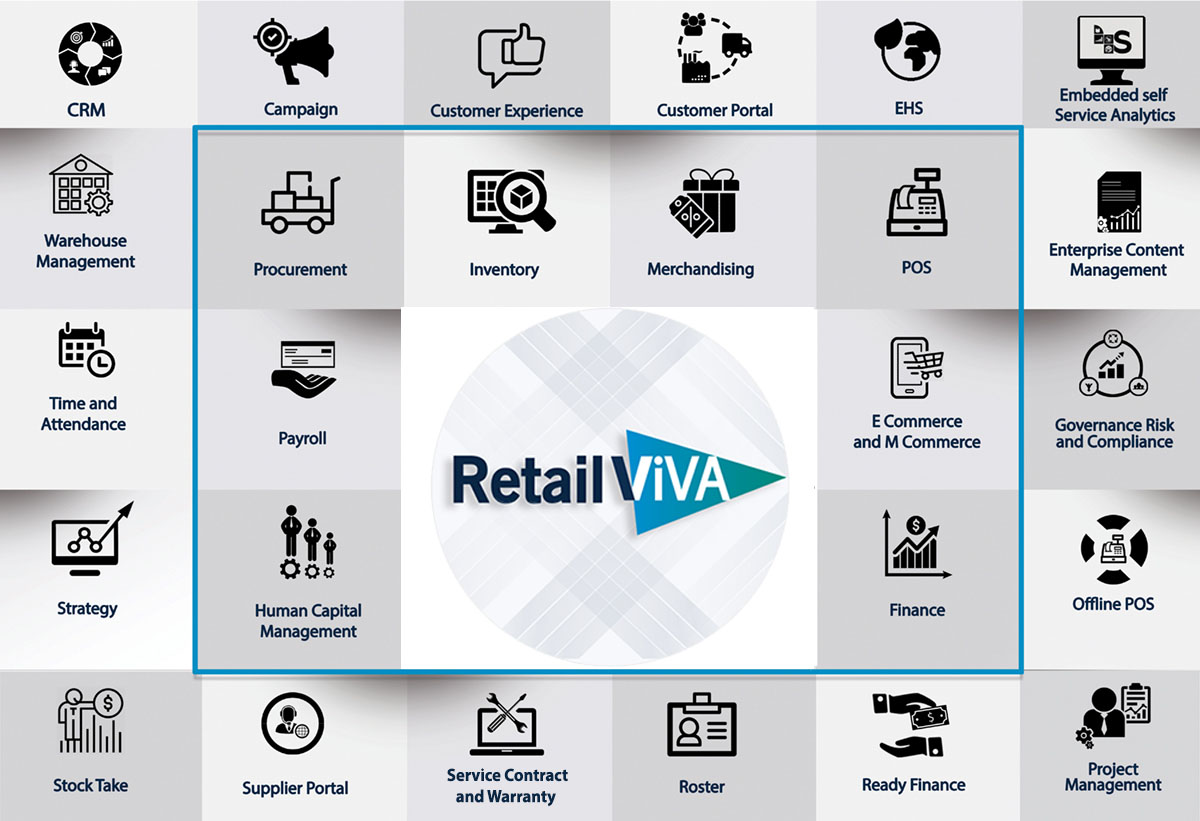

Retail ViVA - Cloud Retail ERP
Sathguru’s Retail ViVA is AI Powered ERP solution built for Retail industry, with 26 integrated modules and 10 tools for Retailer's business transformation

Let us, for a moment, think which channels are responsible for creating a better or bitter experience in the customer’s mind? It must be either digital or physical interactions or a combination of both. Whichever be the channel, it is the human mind that is behind the creation of both. In physical, human plays a predominant role in creating a pleasant experience. In digital, human indirectly plays the role of designing it for an enjoyable experience. When an employee is fully engaged and motivated to perform beyond his normally expected lines, she/he strives to create a good experience for the customer. The moot point to understand is how employee engagement drives creating an excellent customer experience
To have engaged employees, Retailers must have a robust Human Capital Management system, that is not only transparent but also fosters an open culture of exchange. In designing Retail ViVA, we kept these critical criteria in mind and integrated several tools that will foster collaboration, open communication, peer learning and trust creation. The modules and tool also indirectly bestow corporate cultural impartation.

Retail ViVA - Cloud Retail ERP
Sathguru’s Retail ViVA is AI Powered ERP solution built for Retail industry, with 26 integrated modules and 10 tools for Retailer's business transformation
Written by
(Ragu)nathan Kannan
0 likes · 0 comments
swetha m
2 years ago
Customer Financing: Will it convert those on the fence?


Customer Financing: Will it convert those on the fence? - Retail ViVA
4 min readCustomer Financing is a facility wherein customers choose a pre-defined payment plan options rather than paying the full price of a product upfront. Customers choose to pay in easy weekly or fortnightly or monthly installments. Customers get to use the product right away but pay in easy installments. Retailers promote customer financing as it helps to improve their
https://blog.retailviva.com/customer-financing-will-it-convert-those-on-the-fence/

Customer Financing: Will it convert those on the fence? - Retail ViVA
4 min readCustomer Financing is a facility wherein customers choose a pre-defined payment plan options rather than paying the full price of a product upfront. Customers choose to pay in easy weekly or fortnightly or monthly installments. Customers get to use the product right away but pay in easy installments. Retailers promote customer financing as it helps to improve their
https://blog.retailviva.com/customer-financing-will-it-convert-those-on-the-fence/
Anyone who does customer financing, be it Retailer by themselves or through a third-party financier, takes the credit risk into its books. If the Retailer is financing, then it becomes a trade-off between increased sales versus delinquency that they need to handle for bad debts. Making Customer financing through third party finance has the benefit of increased sales while not taking any delinquency risk. However, the service and customer relationship are at the discretion of a third party, which might affect long term customer loyalty. One another smart way to handle this situation is for Retailers to finance customers by themselves to keep service and customer relationships at a high degree but securitize the receivables at the back end to reduce their credit risk.
While building

Customer Financing: Will it convert those on the fence? - Retail ViVA
4 min readCustomer Financing is a facility wherein customers choose a pre-defined payment plan options rather than paying the full price of a product upfront. Customers choose to pay in easy weekly or fortnightly or monthly installments. Customers get to use the product right away but pay in easy installments. Retailers promote customer financing as it helps to improve their
https://blog.retailviva.com/customer-financing-will-it-convert-those-on-the-fence/
I have the first-hand experience of involving in over 200,000 customer financing accounts per annum for the last 20 years and have seen the dominant role customer financing plays to enhance sales. I have seen the ratio of customer financed sales nearing seventy percent and delinquency ratios well under two percent. Securitization is an ideal situation of double benefit where a Retailer builds strong loyalty by believing in customers to advance credit while simultaneously reducing the risk of delinquency. We have seen several customers availing repeat financing which demonstrates true customer loyalty. Customer financing pushes customers to Retailers rather than Retailers struggling to pull customers inward.
We are slowly moving to an era of subscription economy where every capital item or service is becoming a small monthly or yearly payment plan. In the new trend of capital spend turning to monthly service subscription, the Retailers providing customer payment plans will be the thoughtful winner and sustain long term customer loyalty.
Written by
(Ragu)nathan Kannan
0 likes · 0 comments
swetha m
2 years ago
The power of one is smarter than the pieces of many.?


The power of one is smarter than the pieces of many.? - Retail ViVA
3 min readEnterprise adopts Enterprise Resource Planning (ERP) products to digitize their operations. Some enterprises settle for one single ERP product which may cover most of their operational needs. Others may opt for multiple products that claim superiority for a specific function and integrate them using the integration method. The first is a single solution approach through a single vendor
https://blog.retailviva.com/the-power-of-one-is-smarter-than-the-pieces-of-many/
Modern business applications come with connectors for external systems to draw and put data, thereby creating permanent connectivity between two different software systems. Application Programming Interface (API) or other similar interfaces help achieve interaction between multiple systems. However, when two systems interact, there is more exposure to security risk due to users using different connectivity and what is technically known as transport security. Further, cloud hosting has created another new concept known as a hybrid cloud where you connect with multiple systems residing in various clouds, also exposing to security risks. While one can mitigate these security risks through proper security protocols, a risk exposure remains even though mitigation measures are put in by way of encrypted transport protocols.
Let me take, for a moment, example of buying a new motor vehicle. We test-drive many and finally settle for one. We may like individual features of some but may not find all those loved features in the final one we decide. However, we settle for the final one only because it has the most features that we liked, while it certainly lacked few that also we loved. Similarly, in software products, the easiest way to avoid much of security risks, cost of integration, cost of unification and cost of attaining equilibrium in version update between different software is to opt for single solution.
But the future of software is drawing us to same conclusion. When

The power of one is smarter than the pieces of many.? - Retail ViVA
3 min readEnterprise adopts Enterprise Resource Planning (ERP) products to digitize their operations. Some enterprises settle for one single ERP product which may cover most of their operational needs. Others may opt for multiple products that claim superiority for a specific function and integrate them using the integration method. The first is a single solution approach through a single vendor
https://blog.retailviva.com/the-power-of-one-is-smarter-than-the-pieces-of-many/
Seeing this future trend, which is emerging, we built 16 of our 26 module Retail Management Software, “Retail ViVA” using NoCode platform of ours, giving absolute freedom for Citizen Users to add features of their choice or re-configure it as they like. If the platform is NoCode rather than LowCode, users can customise the solution to their specific needs under common corporate standards. If a Citizen User can model her/his needs by themselves, why do they need to opt for multi-products of speciality and take the hassles of combining them to one bundle? In the NoCode environments, self-modelling does not consume much time and one can quickly model and achieve desired results. As we mature into advanced NoCode platforms, users may rethink of moving away from specialist SaaS software products to one unified ERP product of their choice and cascade it up by themselves to their most needs. I strongly feel that NoCode platforms will change the landscape of cloud software and its subscription and see some significant disruptions coming along in the medium term of two to three years. Until then, it will be life as usual with multi-software thriving and gaining market share with their excellent specialized offerings. I opine a single solution approach is safe and secure and has long term sustainability so long the solution provider is credible, stable, and resilient.
Written by
(Ragu)nathan Kannan
0 likes · 0 comments
swetha m
2 years ago
How to emotionally invoke employee Seeking System?

The Seeking System (SS) is one of the seven dominant emotional tendencies of the brain of every mammal and probably, the most fascinating one of the seven. The SS is the primary system that is responsible for creating the urge or motivation for our desires and survival. Primarily, SS helps us to nurture our motivation, urge to explore, and desire to understand. It is the first point of trigger for every mammal to reach out in an expectant mode. By activation of the SS, all mammals try to seek positive experiences. The SS is also called the science of motivation. If one can always invoke SS, one will perpetually discover knowledge out of sheer curiosity. The chemical Dopamine, play the pivot role of activating the SS, and is often referred to as the “motivational” or “feel good” chemical of the brain.
Every human has an active SS. Let us take the example of receiving a surprise gift. It is human tendency to open the gift and seek what is inside. The SS invokes the urge and expectation to know what is inside and motivates us to open the gift for understanding. Seeking urges one to look for places where resources are available. Every google search is a seeking system invoked, and we go and find a website that can provide us information to learn or study or discover.
Similarly, in the corporate world, structured ways can be created to invoke the SS in every employee. It can be during one’s day-to-day activities or as part of Learning & Development (L&D) or as part of group introspection or combination of them. Every attempt must invoke the element of surprise or curiosity to invoke the SS in an employee. Hence, it is essential that on the job SS can be created that links up to employee’s behaviour and advocates the right training with the extreme curiosity of looking forward to that. If it is linked to L&D, the curiosity and desire must be inter-locked to employee self-development, and self-motivation environment must be created to seek out. Whichever way we look at it, the Human Resource system must be capable of addressing this SS concept by inter-linking organizational process and results into creating the right curiosity and desire.
We live in a knowledge economy, and a learned employee is a gainful employee. Employers who care for creating the right launchpad for active learning is providing purposeful employment. In the knowledge economy, humans want to thrive in the seeking system permanently for perpetual improvement. In our company, we give utmost importance to invoking the SS. One question which dares and stares at us every year is what is that we have put into our employees by way of they seeking more than what they already tried and have in them. We have been very successful in our approach of self-development, and that is demonstrated in our four years of consecutive Great Place to Work certification.
The core to creating the SS is to have well designed Human Capital Management (HCM) Module with matured Learning & Development Module. HCM must take active and real-life business situations that circles around the employees and convert them as curious Seeking System opportunities for employees. If a customer rates an experience as poor or exceptional in a Retail environment, the whole sequence of operations that led to that rating must be converted into an opportunistic seeking system of improvement and curiosity to engage in discussions for betterment. If every single score can be motivated towards active seeking engagement, we can conclude that a successful SS is present. Primarily, situational learning must be initiated, and a loop must be created to actively invoke the SS to the desires of all motivated employees.
While designing the Retail ViVA, the flagship Retail Management System, we have kept a motivational seeking system as one of the ends and built it with an open architecture system for L&D. Any Seeking System must be flexible and configurable for creating surprise and curiosity. I am sure if Retailers can work towards creating the right environment for invoking the Seeking System, they can enjoy the benefit of motivational workforce desiring to achieve the ultimate success of customer satisfaction.
Written by
(Ragu)nathan Kannan
0 likes · 0 comments
swetha m
2 years ago
electronic signature
electronic signature is the most preferred way to sign all business documents in the current context and situation. It is also termed as esignature, e-signature, electronic signature, esignature software, esign tool, cloud esignature, cloud electronic signature software, SaaS esignature software, etc. Documents such as Mutual NDA, Agreements, Partner Agreements, Software License Agreement, Commercial Proposal, Vendor Onboarding docs, Employee Offer Letter, Employment Agreement, Freelance Agreement, etc shall be executed through esignature software.
Top 10 Features of CryptoESIGN electronic signature Software:
Sign with Ease: CryptoESIGN electronic signature is as simple as the user sign on a paper. It has self instruct feature that instruct & guides the user to sign with ease.
Multiple Signature types: CryptoESIGN electronic signature software has options to sign the way user is interested. User shall be able to upload soft signature or sign with stylus or insert font driven signature.
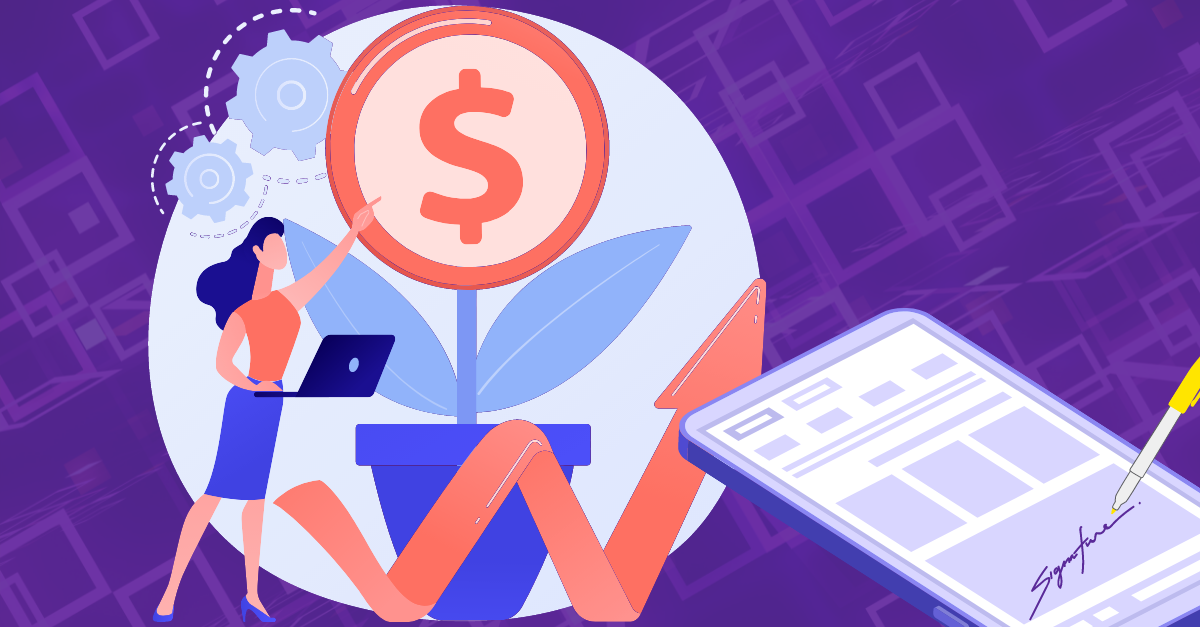
Multi-party signature: Business document signing usually happens with multiple party involvement such as internal stake holders or external signing authorities. CryptoESIGN electronic signature software provision esigning of multiple signing authority, with out much challenge.
Workflow: CryptoESIGN electronic signature, its equally important that the document shall flow in sequential way to get esign as required by business. Paperless Workflow is all that is expected from the electronic signature software to make it more convenient and independent of administrative task such us inperson follow-up.
Widely used soft copy format: Accommodating of basic soft copy formats such as Microsoft Document and PDFs are critical for the usage of electronic signature software. These are two widely used soft copy format files to sign, scan, share & store signed docs
Comply to Security Standards: Business documents are confidential in nature, while these docs travel electronically to have esignature, the electronic signature software shall have either 256 Bit Encryption or used Secure Hash Algorithm or AES encryption methodology to avoid any sort of misuse or unauthorised access.
Two Factor Authentication: Signing parties shall get authorised access, that means, the software shall stop unauthorized access. While accessing confidential docs through electronic signature, the initiator and authorized signatories shall get second level authentication code to access such docs.
Better User Experience: One shouldn’t ignore the importance of the “User Experience”. Past 4-5 years, all the apps and applications have focused more on enticing users with user experience. Although electronic signature is not a business critical application however user’s time is always precious to complete the signing process without loosing much time or toggling between pages / screens. Now-a-days users are looking forward for more simplified applications that accomplishes activities without much technical team’s intervention.
Dashboard: Its always important to have a birds view on the status quo through dashboard. How many docs executed, under process, completed, etc are important to understand for the organization.
Mobile App: Users are preferring to access enterprise applications via their smart phones. Majority of the users are either Android or iOS mobile operating users. Hence mobile app of electronic signature application is expected by default.
Conclusion
CyprtoESIGN is one such cloud based electronic signature softwares. It has much more features than mentioned in this blog. For more details, sign-up for free to explore all such features for your organization. CryptoESIGN has adopted "Security First" approach while developing this electronic signature software. CryptoESIGN implemented a robust security & protect layer across all transactions. CryptoESIGN is secured, trusted and legally valid per IT ACT 2000.
0 likes · 0 comments
swetha m
2 years ago
e-signature
e-signature software gives users the ability to gather signatures on documents shared electronically, eliminating the need for physical documents to record signatures. e-signature software facilitates the distribution of legally sensitive documents for the collection of electronic signatures. Organizations use e-signature software to encrypt documents, such as sales contracts or employment paperwork, for which client, employee, or partner signatures are often required. e-signature can have a time and date associated with the signature but it is held separate to the signature itself so is open to abuse.
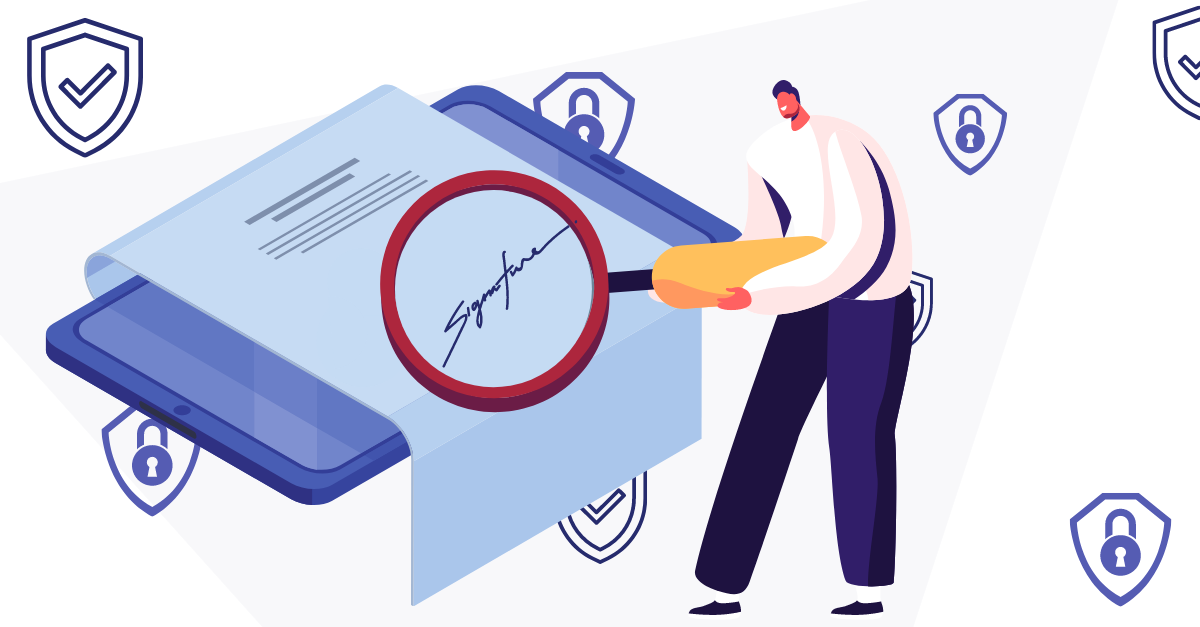
CryptoESIGN is a cloud-based e-signature software with an intuitive user interface and with block chain integration. It is a self - explanatory, single-screen cloud-based e-signature software, offering the simplest of electronic signing experience . A word inspired, self-guided application which makes user convenient in terms of guided UI, mobility of the application.
CryptoESIGN eSignature software one of the important tools for your Business Continuity during pandemic and remote work culture. CryptoESIGN e-signature is the best alternative solution to traditional way of physically signing the documents on the move with time as essence and gaining supply chain efficiency in turnaround of documents between signing parties.
America led the landing global e-signature software market with more than 39% share, followed by Europe and APAC region . The presence of well developed countries such as the US and Canada and high focus on improved cybersecurity with regard to e-signatures are two of the major factors responsible for the growth of e-signature software market in this region. E-signature has a prominent role to play in finance & banking sector, Telecommunication, Retail & Manufacturing, MSME sector in APAC region
The global e-signature software market is expected to grow at a CAGR of 23.7% during the forecast period 2019 – 2027 .

CryptoESIGN, a self - explanatory, single screen cloud e-signature software, offering the simplest of electronic signing experience. CryptoESIGN e-signature is the best alternative solution to traditional way of physically signing the documents on the move with time as essence and gaining supply chain efficiency in turnaround of documents between signing parties.
Secured, Authenticated, Trusted, Legally used: CrytptoESIGN e-signature Software avidly used in the new normal. CryptoESIGN electronically Signed docs & agreements comply with industry policies, standards, laws, and regulations. CryptoESIGN eSignature software one of the important tools for your Business Continuity during pandemic and remote work culture.
0 likes · 0 comments
swetha m
2 years ago
Post from swetha m
Enterprise Content Management – A cure or a curse?

Enterprises are full of content and float in content every moment. There must be a system to share, store, protect, control, and destroy content so that only authorized content is shared or stored. In the absence of a content management system, documents may be lost or destroyed or distributed unauthorizedly or stored in the wrong locations. So that content is properly managed, enterprises adopt a centralized Content Management system, which is popularly known as Enterprise Content Management (ECM) or Content Services (CS). Both of then represent the way content is organized and systemized in an enterprise.
Traditionally, enterprises managed content in a scattered manner, some in the storage location of individual employee’s computers or the more organized ones pointed storage in one central drive in their network. However, this is rule-based, and success depends on employees following the rules to store as per corporate policy and procedure. They were indexed to search but did not have any associated taxonomy tags to group them for easy retrieval. Keywords search within content was also not possible easily.
Cloud-based content management systems coupled with file sharing and file synchronization services became quite popular during the last decade and occupied center stage in corporate adoption. However, there were concerns about security for adoption at a faster rate and became more popular as an employee’s personal cloud content management system quickly. Some of them have improved and are addressing the gaps for being a full-fledged enterprise content management system with robust collaboration features. Multiple users collaboratively manage web and enterprise content, synchronizing their thoughts, actions, and expectations. ECM systems have brought the vibrancy of active collaboration for concerted effort and shared storage, avoiding duplicate storage of the same documents within a single network. The deduplication of document circulation has saved a substantial amount of space and corporate bandwidth usage in their buy operational timing. In one of our client locations, the average saving on deduplication noticed was close to 50% of data circulating over email.
Retail ViVA, our Retail Management System, has integrated ECM across the other 25 modules and stores data with intelligent taxonomy for easy retrieval. The accountability matrix created for content access is in adherence to corporate governance policies of the enterprise. Retail ViVA stores all reports in ECM and circulates a link for access, providing transparency of who has consumed or otherwise. ECM helps retailers to achieve the efficiency of content storage coupled with ease of content access.
ECM is green, clean, and is the cream of corporate governance objective. Retailers must care about what content is distributed and who has authorized such content for distribution. We can achieve the best accountability while avoiding duality of authority, bringing in clarity in the organizational hierarchy towards faster achievement of enterprise goals and objectives.
Written by
(Ragu)nathan Kannan
0 likes · 0 comments
swetha m
2 years ago
Post from swetha m
Is BOPIS emerging as the future of Retail?

BOPIS (Buying online and picking up in-store) is becoming a new trend. Brick-and-mortar stores that also offer e-commerce or m-commerce are actively promoting BOPIS, which works to best of the combination of online cum brick-and-mortar existence. BOPIS also gives the unique advantage of providing the customer the choice of his channel and thus customer feels empowered when he chooses BOPIS. Older generation customers feel the benefit of the combination of traditional and digital experience, something that soaks into their acceptance easily
BOPIS calls for a real-time stock update and online visibility of stocks to customers across a retail enterprise and swift movement of stock replenishment in an automated manner. Most legacy retail ERP systems have end-of-day batch run to update stock balances and are not suitable for BOPIS enablement. Customers demand service, would like to shop online, and desire to pick-up in the next two hours. Retailers would not be able to service customers confidently if their stock update is not in real-time and cannot guarantee stock delivery to a customer due to poor visibility of stock at store or warehouse at any moment. Further, legacy retail ERP do not practice stock reservation for ordered but undelivered. Stock reservation is one of the fundamental business processes for omnichannel readiness for a retailer. Fundamentally, BOPIS to be successful, online stock visibility is a must, as echoed by Gartner in Retail CIO new year resolutions, 2020.
COVI-19 pandemic initially put the logistics and supply chain in disarray for two reasons; firstly, they were all diverted to serve emergency medical supplies; and secondly, they were unable to operate at one hundred percent efficiency due to lockdown conditions. Hence, customers opted for BOPIS as an alternate strategy. Further, customers find BOPIS as an effective way to shop due to the saving of shipping costs. Customers found park-in or curbside pick-up as a natural and time-saving option while giving them the comfort of contactless payment options. Since safety also played a predominant role as to how customers shop, BOPIS became one of the apparent choices for items that customers required immediately for consumption or use.
Customers can be given the best experience in BOPIS by giving them clear instructions about their parking lot at park-in or curbside slots and can gain a no-wait experience which otherwise they experience by standing in the line at brick-mortar. BOPIS experience so far had proven that more than 75% of BOPIS customers also shopped more items when they came for pick-up, thus providing an opportunity for cross-selling and up-sell.
While designing Retail ViVA, we provided BOPIS right from the beginning of its launch and giving flexibility to the customer to pick up from any store of her/his choice, truly to omnichannel customer experience. Retail ViVA Mobile APP offers customers the choice of a store for pick-up in person at the time of check-out.
Technology is making a difference and is driving the future of customer engagement and experience in the retail world. Retailers who are adopting omnichannel solutions will be far ahead of the competition, and all early adopters will reap the advantage of pandemic and post-pandemic business growth. E-commerce is here to stay, so is Brick-and-mortar, so is BOPIS as well. BOPIS may well turn out to be the new normal of retail, soon graduate to the normal-normal of retail and thus be the future of retail. Retailers will innovate with BOPIS to make a customer do the impulsive shopping at park-in or curbside through the adoption of augmented reality techniques to create a physical walk-through of stores towards business growth. BOPIS is certainly turning out to be the smart choice of retailers as well as customers and thus a win-win for both.
Written by
(Ragu)nathan Kannan
0 likes · 0 comments
swetha m
2 years ago
Post from swetha m
100 marks in 100 days for SERP Ranking of retailviva.com
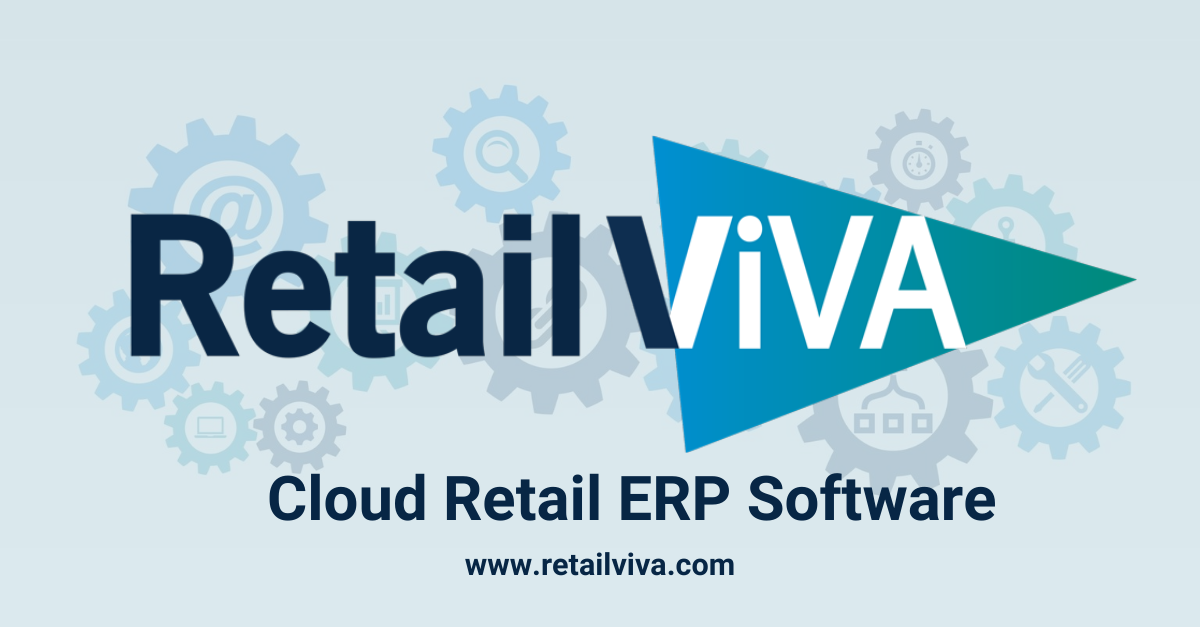
SERP is an abbreviation for “Search Engine Results Page,” and Ranking stands for “Position,” among others. Together, they represent the position of your website or blog or article on a search engine result page. When we query for a “Keyword” in a search engine, results get displayed based on our query. Search engines follow their algorithms to populate results in relevance to the Keyword. The keyword is the word what a user thinks about when he desires to search. If I am looking for a summer cruise ride and stay in California, my keywords for search maybe “Summer cruise from California.” There are many search engines in the world. Google occupies the number one spot, followed by Bing.
We have pets at home, and they love to play with us. They demand attention and importance. My friends have been telling me how they have been playing with their pets all through the day due to lock down and working from home. Similarly, you should treat your website as a digital pet and bestow attention and importance. The importance it seeks is to wine, dine & dance on the first page of Google and every website’s heartthrob is Google SERP ranking.
Google and Bing have their algorithm to show up a website on the first page or first in the search listing. It is a golden principle that no search users go beyond the second page of search engine listing and most do not even go beyond the first page. Hence, your website must get listed on the first page of google search so that your site comes up for the relevant keyword. The process of growing natural traffic to your website both qualitatively and quantitatively is known as Search Engine Optimisation (SEO). When we started our google SERP ranking improvement project for www.retailviva.com, our objective was to get ranked on the first page. We are a team of four that wanted to attempt this. It is all started on 17th April 2020 with our first meeting to debate and discuss and lay the path forward to achieve this. The first step was to understand google webmaster guidelines in toto. This strategy much helped us to understand all the little nuances that we need to care for in a website.
We scheduled one-hour meetings thrice a week and a day in the middle was left to accomplish changes that we must make based on our previous day understanding of SEO techniques. Simultaneously, we realized that content is king and to confess, we had poorly written content on our website then. We started re-writing content for about 35 pages, with a clear articulation of relevance of content for each specific page, plagiarism-free. The related pictures selection also was a task added to content preparation. The keywords were the riddle and puzzle to be solved, with questions like single keyword per page or multi-keyword per page or which relevant keyword search users will think first. We quickly realized that one must make several strategic decisions along the pathway of the website SEO process. We applied collective decision making after consideration of all contexts. We sometimes agreed, few times agreed to disagree, but all times agreed to the conclusion.
When we started, our SERP ranking was at the bottom of the 120th page in google search and we could see us forging forward every week as we began making changes in tune with our learnings on SEO strategy. The motivation of small success made us finish the google webmaster guidelines from the first word to the last without missing any side links and when we finished, we were more than ordinarily confident that we have at least done everything right as per the author. We did a similar exercise for Bing as well quickly in the next few days. It was 90 days of learning something from scratch and we moved to the third page in SERP by that time.
We had a unique website design wherein our home page was the visualisation of our module icons with links without any wordings at all. Google loves unique websites and we consider our site as unique, quite unusual to other product websites. We then realized that we must have wordings to represent our home page for Keyword tagging and with a single line wording and tag line, we hit our last nail to finish it in style.
The D-day was the sweet 100th day, and we noticed that we are at a numero uno spot in SERP in google occupying the very first position in about 35 developed countries starting from the United States and ending in New Zealand for “cloud retail ERP” keyword. The simple learning was that follow the author’s instructions meticulously to get the best results.
I will fail in my duty if I do not mention three colleagues who contributed the maximum to this project namely Santosh Kumar Chakilam, Sudhakar Emani, and Neha Velshetty. Kudos to my colleagues who scored 100 out of 100 in 100 days. They are on to their next mission to maintain SERP rankings and that discovery will give us more knowledge to pen sometime in the future. Until then, please try and make your website wine & dine on the first page of Google SERP.
Written by
(Ragu)nathan Kannan
0 likes · 0 comments
swetha m
2 years ago
Post from swetha m
The Power of QR Codes in Retail: How Useful are they?

Retailers can use QR codes to drive traffic to their website or landing page or any call-to-action page in a simple scan & go way for the mobile users. Retailers can also send discount coupons through QR codes or send a similar call to action for after-sales service making it very simple for users. In the current contactless environment, it can help to confirm delivery by customers through a simple scan of QR code on the delivery pack. You can get feedback from your customers through QR code usage or even help them download a mobile APP in seconds without any complexity.
What are QR codes, and what can they do?
QR codes are like bar codes but more secure, and most electronic devices have them. Most mobile phones come with the in-built capability to read QR codes and display their content or action. For example, you can scan QR codes in shops to find products or their features. This helps the customers to find the right one quickly. You can use QR codes for promotional purposes such as sending a discount coupon, free games coupons and other offers etc. Customers can confirm delivery by scanning QR codes. You can make payment easy through the use of QR codes. The ability to embed even call-to-action information in QR codes makes it multi-purpose oriented and Retailers can exploit this feature to their best of imagination in making it easy and intuitive for customers and other stakeholders. As mobile devices are becoming more powerful and are equipped with advanced scanners, retailers can even convert a QR code to a barcode for easier scanning. Further, retailers can customise application needs according to the technology of QR code through their innovation.

What can QR codes do for customers?
When scanned with a mobile phone, a QR code can convert it to an image, text or even a barcode with no distortion. By default, we can see any kind of image in the QR code in a live mode which allows customers to share an image via social media or e-mail. It helps customers to avoid the hassle of typing a web address or perform multiple instructional steps to achieve their purpose. In the current era of contactless payment, it helps immensely to pay at check-out by simple scan in seconds.
Conclusion
Retailers and their brands should take advantage of the evident QR code trend. As QR codes are now quickly and widely adopted by web users as a mobile web interaction tool, the retailers need to be using them more and more to retain their customers. Retail ViVA is QR code ready, and we integrated it at multiple instances to improve customer experience. Any modern Retail ERP must have extensive use of QR code integration to save time, build efficiency and enhance customer experience.
Written by
(Ragu)nathan Kannan
0 likes · 0 comments
swetha m
2 years ago
Post from swetha m
4S: Brand Identity

4S, our embedded self-service analytics tool, is an easy to use charting tool that every user of our ERP can use to create their charts and analytics. The simplicity of its design merits attention. 4S is so intuitive that a user can learn to do graphs in less than three minutes and can do a chart in less than thirty seconds. We wanted to empower every user to self-perform their analytics, and that is how the bottom-up design was born. The 4S logo was designed by us to represent four steps that user does to make a chart.
The logo is a simple combination of number 4, and alphabet S. S stands for steps, and in total, the logo indicates four steps. The four sequences of steps involved in making a chart depict the letter “4” with four different icons. Each icon represents one step.
In Retail ViVA, a user can easily prepare a view of their focussed data set in any InfoGrid through a simple drag & drop of relevant columns to a group. Users can also use advanced filters to narrow further their focussed data set through filters. Users keep creating several InfoGrid views for various use case needs. Retail ViVA stores all the InfoGrid configurations into its database. Our 4S analytics tool takes user-created InfoGrid views as the base.
Step 1 is selecting the right InfoGrid for chart preparation. The top limp of the vertical slide of letter 4 represents this indicating the selection of InfoGrid from the Retail ViVA database.
Just below that top limb, Step 2 is the selection of an appropriate chart that suits the right visualization of selected InfoGrid. The bar chart icon in the lower limb of the vertical side of letter 4 represents this.
Step 3 is about completing all settings relevant to the selected chart, like titles, labels, orientation, grids, data labels, and the like. The second icon, which is horizontally next to step 2 icon, represents this.
Step 4 is about saving the prepared chart for publishing in the presentation layer for user consumption. The downward vertical limb below step 3 icon represents this.
The 4S brand identity represents simplicity with which users can prepare charts and enjoy analytics of their data without any IT knowledge. The video below clearly depicts the simplicity of 4S tool and how users can make charts within 30 seconds.
Our 4S tool is simple to learn and use hiding all the ingenuity of its sophisticated design away from the user. It is a real example of design thinking and making complexity a simplicity to the absolute pleasure of a citizen user. Our 4S is a pleasurable experience for every user and appreciated by many for its ease of use and power of analytics. Like the simplicity of the tool, we created a simple brand logo to represent this grand design of ours.
Written by
(Ragu)nathan Kannan
0 likes · 0 comments
swetha m
2 years ago
Post from swetha m
What Is Retail Transformation and Why Is It Important?
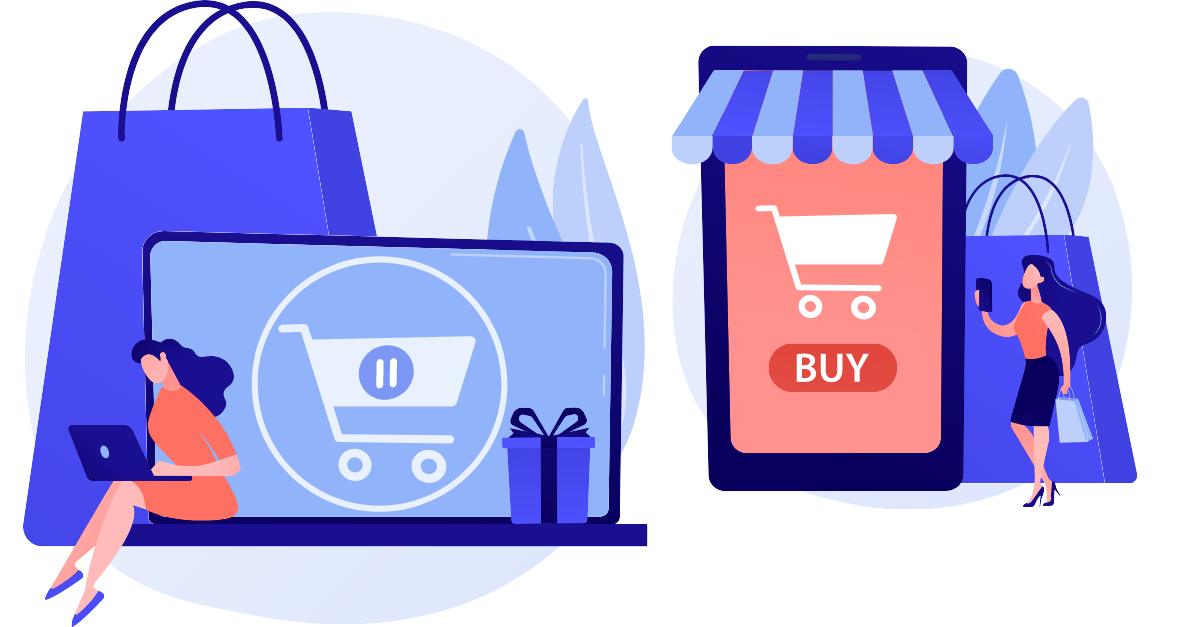
Modern Retailers need to be ever ready to respond to changing preferences of customers. Retailers must evolve the right strategies so that they can capitalize on consumer buying preferences. Retailers must be able to spot the right opportunities and respond quickly to customer demands. Retailers need to evolve agile processes that make shopping easy and convenient to shoppers through the right mix of automation and physical interventions. Retailers must strive to digitally optimize the entire customer journey with embedded analytical data for an actionable feedback loop.
What is retail transformation?
Retail transformation is a process in which a chain of activities is modelled to increase sales, boost customer satisfaction, and minimise the cost involved in operations. This is achieved through extensive digital transformation and a thorough understanding of the customer journey to success.
The importance of retail transformation
The retail industry is undergoing significant changes, and digital transformation is the critical driver for the retail sector to remain a competitive marketplace. Modern retail brands use a mix of automation and personal attention to delight the customers and keep them coming back. Retailers need to leverage customer data to analyze customer behavior and make the marketing impactful. Retailers need to use the latest technology to optimize the value chain of their business. Retailers must also use data to avoid costly mistakes. The modern retailer needs to focus on long-term digital transformation plans to remain relevant and set new benchmarks of success.

The four key pillars of retail transformation
Electronic data capture, E-commerce, In-store Shopping, and motivated employees are four key pillars of retail transformation. Understanding how consumers live, buy, and interact with brands and knowing the preferences of the consumer would allow retailers to predict, connect with, and engage with them. The retail organization’s culture and data points connect here to get complete insights. Retailers must understand their customers’ buying behavior so that they can improve the offering to the customer on a personalized basis. Retailers need to understand customers in ways that help them give tailored shopping experiences to the consumers. A connected experience where customers can see the inventory, pick the product, pay for the product on their phones, and at the store would help shoppers who have limited time and money to make their purchases. Agile processes designed with high efficiency in mind is needed to achieve the above objectives. Finally, employees who make the magic happen are trained to integrate themselves into these four pillars of transformation. In a nutshell, Retailer’s organizational culture, Retailers Customer success journey, Retailer’s business model, and Retailer’s employee engagement would matter the most to achieve a perfect retail transformation.
Retail transformation strategy
Retailers are fighting the battle between brick-and-mortar and online commerce. Young customers are shifting to a more digital experience and self-service platforms. Most retailers have already started to deploy AR and VR technologies to improve customer experience. Moreover, shoppers spend 5 to 6 minutes in each store visit, and at least half of the purchases are not made offline. This is set to drive the demand for visual merchandising and help the retailers improve the overall shopping experience. Visual merchandising helps in delivering an enhanced shopping experience for customers through deploying AR technologies such as beacons and digital display screens. In the online commerce space, various mobile and e-commerce technologies are being tried to impress customers and lure them into coming back again and again. After all, both experiences are connected to create long-term customer value and build continuing loyalty with the customers. Retail ViVA, our Retail ERP, is made with the objective of agile retail transformation in an integrated manner.
Conclusion
Retailers can move forward with the right strategies, which are guided by three simple vital points. First, assess the current strategy; then look at future trends that customers and suppliers expect from you; then shift strategy to align it to customer and supplier expectations. This is a continuous improvement cycle, and thus, the evaluation must be perennial.
Written by
(Ragu)nathan Kannan
0 likes · 0 comments
swetha m
2 years ago
Post from swetha m
Is It Time for Your Retail Store to Convert to Open-To-Buy?

The buzzword of Open-To-Buy occupies every merchandiser’s mind to save on dollars. Open-To-Buy not only helps maximize sales dollars but also minimizes cost dollars. It is an essential tool for Retailers to improve their financial performance. Small Retailers struggle to make their merchandise budget and often buy based on surmise. Big Retailers struggle with bulky worksheets as Retail ERP software does not offer the Open-To-Buy concept as part of their core modules. Some software provides it as an add-on module with poor integration.
What is Open-To-Buy?
Open-To-Buy is a concept to bring more transparency into the retail business. It is a tool that addresses the most critical question of how much to replenish and when to replenish stocks as they deplete. Retailer’s significant investment goes into their inventory buys, and Open-To-Buy addresses how much to buy. It is always future-oriented and adjusts the plan based on past trends and the vendor’s history of supplies. It is derived based on sales budgets to procurement budgets to actual sales in dollar terms. Often, an Open-To-Buy is combined with an assortment plan to answer both questions of how much to buy and which items to buy in each inventory category. Open-To-Buy is not used for daily basics or essentials as they go by standard replenishment at re-order levels.

Open-To-Buy in Retail
Open-to-Buy starts with a transparent planning process. Planning is the cornerstone of the Open-To-Buy concept. A sales plan or budget is prepared period-wise, sometimes even week being the tiniest period, but most take a month as a period. After a good sales plan is ready, an inventory plan is prepared to match the sales plan. The critical question here is how much inventory do I need to keep supporting subsequent period sales? Based on stock on hand and expected movement of stock, an inventory receipt plan is made, and vendor purchase orders are finalized ultimately. Several other inventory adjustments like markdowns, adjustments, one-time bulk sales, etc., are also considered while arriving at the inventory replenishment question.
How can you Implement an Open-To-Buy Strategy in your store?
Open-To-Buy is a collaborative partnership where both the retailers’ suppliers and the merchandisers work together. It is a solid strategy to minimize and manage inventory costs. In Retail ViVA, our Retail ERP, we have created an integrated merchandising module that provides full-fledged Open-To-Buy Store Inventory Functionality to help your store generate profit. Inventory replenishment ordering is so automated that merchandisers can efficiently function and place an order on time to receive goods on time. A sale lost due to lack of inventory at the store can well turn out to a customer loss permanently, and thus the availability of inventory items at the store plays a crucial role in customer loyalty and experience.
Conclusion
Customers are cost and time-conscious. So, you can implement Open-To-Buy with precise analytics to track return on investments on your inventory assets. Further, Open-To-Buy can help merchandisers plan better with optimum inventory holding without facing the risk of stock-outs.
Written by
(Ragu)nathan Kannan
0 likes · 0 comments
swetha m
2 years ago
Post from swetha m
Why Online Shopping is More Popular Than Physical Shopping
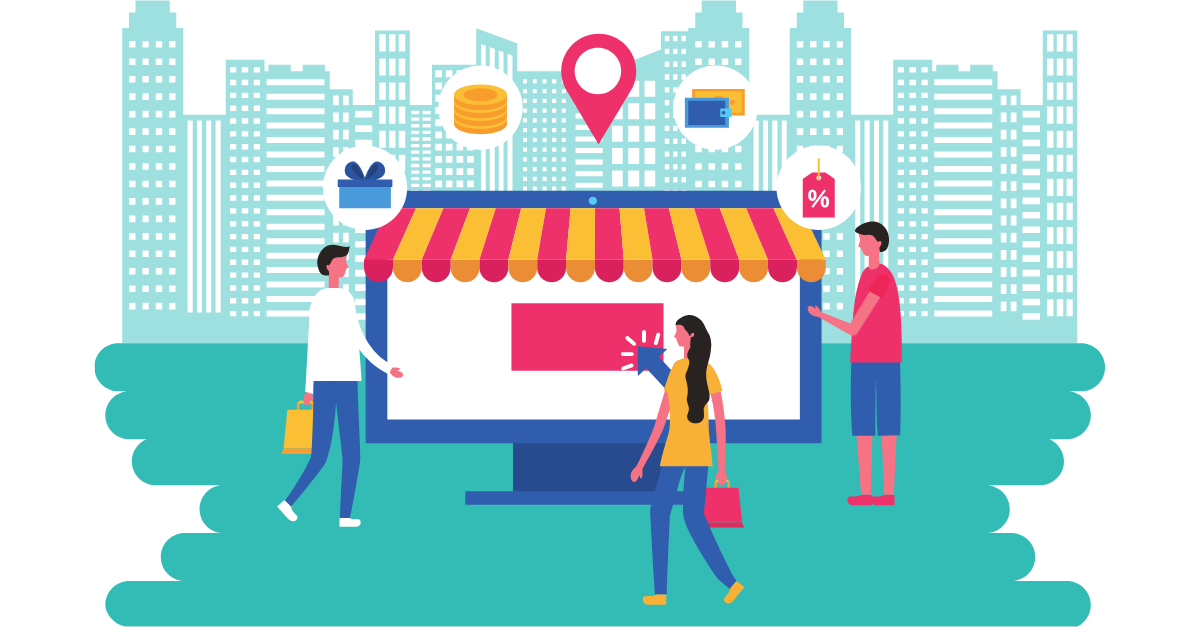
Online shopping has become a habit due to its ease and convenience of shopping. One can browse various online shopping sites much like visiting multiple physical stores and make a buying decision without any movement. The time to shop is much shorter and facilitates easy price comparison. The value that online shopping provides for standard items is simply outstanding. With the advanced digital era unleashing in every front of human life, online shopping has occupied the prime spot in digital evolution. Consumers have embraced it with confidence due to superior experience and convenience.
How online shopping has changed the way we shop
One of the primary reasons why people are inclined towards online shopping is the fact that prices online are the same or slightly cheaper than those in physical stores. Thus, there is much less to worry about bargain or price comparison. Also, several businesses provide discounts online. This includes coupons, discount codes, and vouchers. Discount offers are one of the reasons why people buy more when they buy online. It is simply amazing to see the way people buy items online. Sometimes, they are prepared with the best offers such as cashback and points. People can get amazing discounts on their food and shopping items such as t-shirts, sneakers, gym sets, electronic items, groceries among other things.

Why online shopping is popular
Online shopping provides customers with highly personalized services at their doorstep. Because of changing lifestyles and seeking convenient shopping methods customers opt for online shopping. Online shopping fulfills a wide range of choices like variety, affordability, and personalization. Online shopping provides customers the unique opportunity to select from different colors, sizes, and preferences that are specific to their needs. Additional options make the shopping experience more delightful. There are lots of shopping platforms that give a wide choice of choices and convenience for customers. Another reason is ease. The ease of downloading and configuring mobile applications makes online shopping a lot easier. We help our customers white-label mobile app and their customers can download the Retail ViVA mobile app from the play store or app store in minutes to start shopping. Retail ViVA comes with ready-to-use e-commerce and m-commerce modules that can be rolled out within hours/days.
Conclusion
Online shopping not only improves the physical shopping experience but also helps one to understand the product offerings better. Online shopping is an entirely delightful experience and will continue to win the hearts of the people who enjoy and love this treasure trove.
Written by
(Ragu)nathan Kannan
0 likes · 0 comments
swetha m
2 years ago
Post from swetha m
Retailers: Are You an Intelligent or a Responsive Retailer?

Retailers: Are You an Intelligent or a Responsive Retailer?
Retail is the largest B2C industry in the world, generating nearly USD25 trillion in revenue. With the onset of smartphones in 2010, the retail sector has seen an extensive transformation, with almost every business segment doing well, except a few. Mobile and e-commerce segments thrived while physical stores continue to dominate as usual
An Intelligent Retailer creates the best digital systems and processes to serve its customers the best and aspires to achieve competitive positioning in the marketplace. The intelligence of the Intelligent Retailer comes from its intelligence-gathering through data analytics. However, if such an intelligent retailer is not agile, it may take some time for the intelligent retailer to change to new normal. A Responsive Retailer responds to customer’s buying behaviour in real-time, thereby keeping a watchful eye on the shifting market trends and still strive to be an Intelligent Retailer. A responsive retailer is always agile, quick to change parallel to the evolving dynamics with consumer preferences or market vagaries or regulatory constraints.
What is an Intelligent Retailer?
According to Lexis-Nexis, an Intelligent Retailer is one who, through data, facilitates decision-making by considering customer needs in context. It is based on Intelligent Analysis, where cognitive technology uses analytics to create contextual understanding. This enables the retailer to understand consumer behaviour, purchase preferences and make offers that are relevant and attractive to the customers. It further helps the Retailer to make automatic product recommendations to the customers for her/his emerging lifestyle requirements.
What is a Responsive Retailer?
A Responsive Retailer is always responsive to the changing dynamics of the marketplace and is willing to change rapidly to match the changing needs of the consumers. The Responsive Retailer must take consumer preferences and market conditions and respond immediately to these changes. Further, the Responsive Retailer is ever ready to meet the new normal in a digital-first world. A Responsive Retailer operates with efficient digital systems, processes, and people to serve consumers the best they expect it to be served, all of them being very agile and self-configurable in minutes. The Responsive Retailer does not solely depend on consumer journey mapping but agile and dynamic enough for the strategy and execution around meeting all customer needs, including the unexpected.

The Difference Between Responsive and Intelligent
In a way, both Responsive and Intelligent retailers are independent of each other and can be used together. However, the problem lies in converting that capacity to serve the business with responsive or intelligent retail marketing and sales in their respective roles. However, they work in harmony and complement each other to create a genuinely empowered customer base who is willing to share their valuable market information with retailers to understand the brands better. In an intelligent retailing environment, retailers can deliver personalized, relevant, and dynamic offers to the customers to know their preferences, moods, needs, and demands. Responsive means that retailers are every ready to act upon customer needs through their agile process methods in the quickest possible time, almost instant to customer’s changing needs.
Retail ViVA, the Best of Both Worlds
By understanding the retailer’s needs and looking for the best of both worlds, we built a Retail ERP architecture that would deliver a unique experience on both eCommerce and brick & mortar in an omnichannel way combining intelligence and responsiveness. Our CodeSelfie NoCode platform-driven Retail ViVA provides the dynamic responsiveness wherein Retailers can make changes to their systems and process through self-configuration without needing to write a single line of code.
Conclusion
It is not about being an Intelligent or Responsive retailer. It is about adapting to change. Agility and responsiveness must be built into the system from the beginning of the journey. Just as a rubber band has an elastic property, a system also needs an elastic property to respond to changes. If an Intelligent Retailer’s systems cannot be changed dynamically for new emerging needs almost instantly, the intelligent retailers start losing their position only to see a responsive retailer has captured the market. Hence, Retailers must adopt a Retail ERP system that is not only intelligent enough but also equally responsive enough to win the new game of a successful 21st-century enterprise.
Written by
(Ragu)nathan Kannan
0 likes · 0 comments
swetha m
2 years ago
Post from swetha m
Ways to Enhance Customer Experience Through Good After-Sale Service
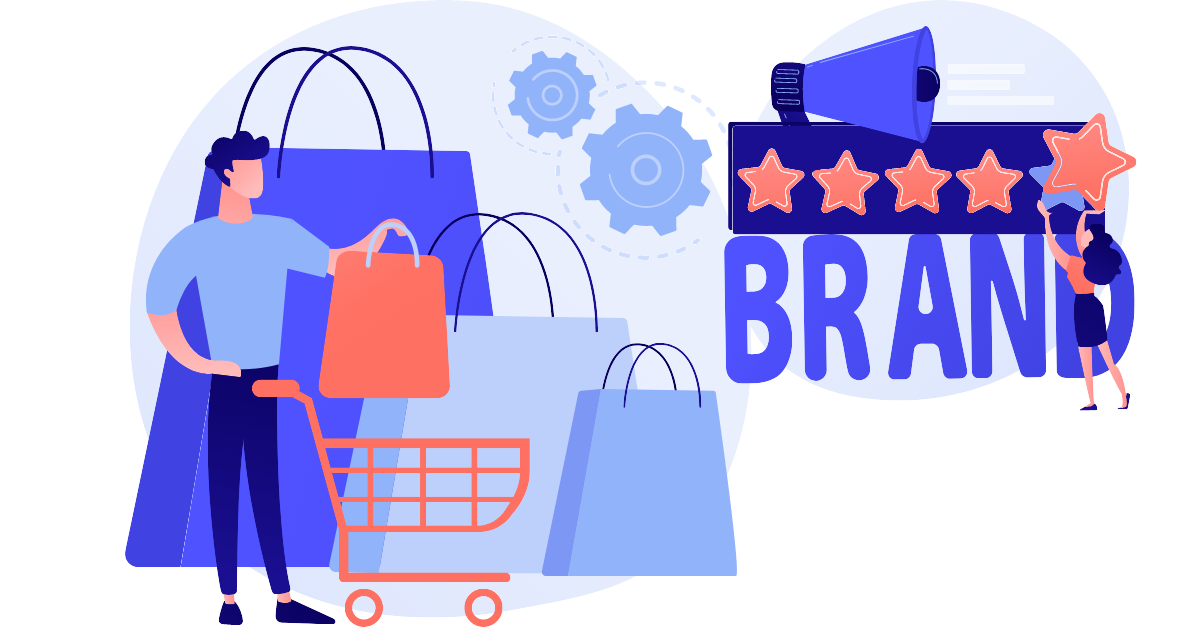
When customers acquire products that are linked to after-sales service, the second innings of the customer experience journey starts then. An excellent after-sales service will enhance customer loyalty. Firstly, customers must find it easy to contact for assistance. Secondly, they must be handled professionally and serviced according to urgency and circumstances. Long wait times, inordinate delay in service, and inadequate communication can frustrate customers and result in a poor experience
The customer experience journey
A customer journey, which customers experience when interacting with a product or service brand, is divided into two phases — engagement and satisfaction. Engagement is the first, where customers acquire products. This phase is where customers provide feedback, try out different products and begin to purchase. Satisfaction builds upon the existing satisfaction when customers find it easy to engage with customer care. The satisfaction from customer care engagement is vital for a company, as enhanced customer satisfaction there would lead to an additional robust sale. Therefore, an excellent customer experience is essential for any company by improving after-sales service.
The importance of customer service
People buy from a company for reasons beyond its products or services. The entire experience of dealing with the company should be seamless, rewarding, and of good quality. Customer loyalty is a crucial success factor in today’s fast-paced world. Product companies from industries across all the geographies compete for their customers and high-quality sales force. Although customer-centricity is an essential element in a business, it can become a real challenge when the sales force focuses on customer acquisition rather than retention.
What is after-sales service?
1. After-sales service helps service providers keep the door open for current and prospective customers by enabling customers to make quick, simple, and reliable purchase decisions and drive awareness and sales. 2. The industry’s after-sales model calls for better customer experience through 24×7 services and co-creation of new customer experience and loyalty. 3. After-sales service is often divided into two phases: Presence of the service provider: Service providers who are present at the time of customer service needs are considered to have good customer service. Service providers who remain absent for most of such times would be considered to have poor customer service.
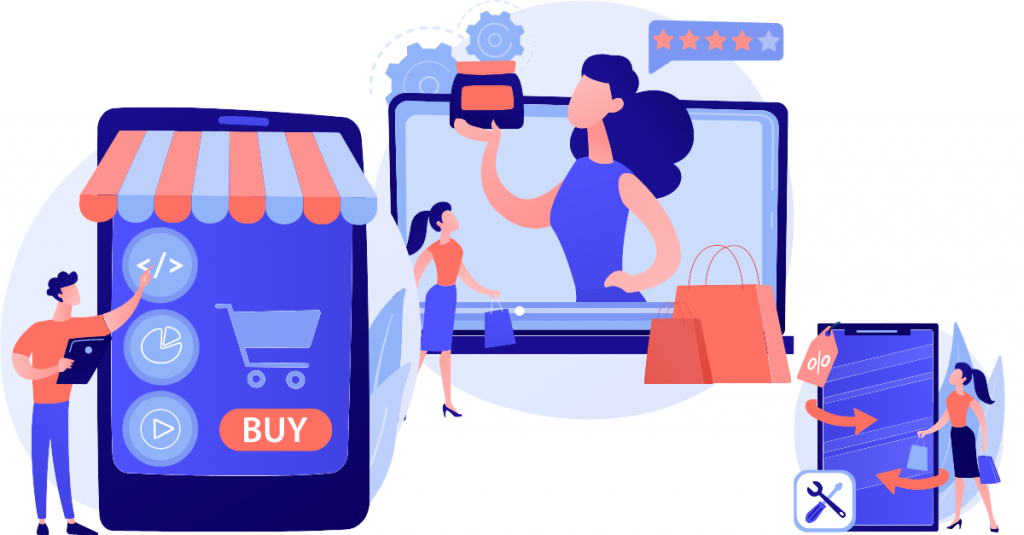
The customer experience journey
To ensure that every part of the customer experience journey is enhanced and strengthened, here are ways to go about it. 1. Communication – Educate, educate and educate; How many times have you had to wait hours to get the part you need or made to drive from home to the supplier or the workshop, only to find that a technician couldn’t be found? Communicating with customers about the status of the parts and service requests as they happen can be rewarding to the customers without any anxiety in their minds. 2. Service – Offer compassion and empathy-How many times have you faced troubles with a repair or maintenance issue, only to be told you are at fault for something you didn’t know about?
After-sales-service: how to provide an enhanced customer experience
Maintaining customer loyalty and happiness requires various services and resources to be provided most optimally. In addition, after-sales service is not just about customer support. Instead, a method to enhance the service is to differentiate your product through unique offerings that support your products. A sound digitized after-sales-service module in the Retail ERP built in an integrated manner can make a huge difference. Hence, we embedded and integrated a robust warranty and after-sales-service module as part of our Retail ViVA and perfected it over a decade-long usage experience by our retail customers.
Conclusion
The high-touch customer experience design is the way to go to ensure customer delight. Research has clearly shown that the immediate satisfaction of customers is often most vital to customer loyalty and retention. Our experiences and relationships with others, including with brands, are critical predictors of the way we think, feel, and behave, as well as how we act toward them. It is also necessary that customers be empowered and to feel as if they have a say in how the brand functions and engages. The ingredients to optimize customer experience must be embedded within the business model and strategies of today’s leading companies through good digitization.
Written by
(Ragu)nathan Kannan
0 likes · 0 comments
swetha m
2 years ago
Post from swetha m
No, you should not say “No” to NoCode: It’s rocking

NoCode development refers to a platform or tools that help non-developers to create computer software applications without writing even a single line of code. Traditionally computer programmers write code in a preferred computer language to develop software applications. Every business change had to go through a circular phase of back-and-forth iterations before a change in the software code can affect the business change. NoCode gives freedom for an end-user to make changes as business demands and eliminates the dependence on programmers. The whole purpose of NoCode is to make people who are not programmers to produce applications without writing a single line of code.
What is NoCode?
NoCode solutions are end-to-end solutions used by people who are not programmers to create and update web applications and websites using pre-configured graphical user interface artifacts. NoCode allows non-developers to modify, build and deploy software programs without knowing how to program in a programming language or working as programmers. When non-programmer wants to change an existing software program, they can’t do it. With NoCode, one can easily make any change as they choose.

The Future of NoCode
The Future belongs to Citizen Developer who wants to do things as it demands. They would like to change the software code to suit the new business model or new business process, a new idea, or a new strategy. They also would like to do it immediately and assess the impact instantly. If these have to happen at such a speed of thinking, it can only be done using a NoCode platform. The traditional software development process consumes quite time to make software code changes in an agile manner and thus does not suit a dynamic modern enterprise that is always exploratory. Perpetual innovation is the art of success in the 21st century, and NoCode is the means to achieving it. NoCode has gained momentum in the recent past and is here to stay, with more traction in the years to come. Slowly, we feel all developers will turn into Citizen Developers with many NoCode platforms coming into the market.
Conclusion
Programmers have needed a solution for a long time and when it comes to coding it faster to situations. Only innovation can solve the problem, and one such innovative solution is the NoCode platform. It doesn’t matter how you have been designing, programming or developing a software program until now but when it comes to scaling up the system you are building, then there is no substitute for NoCode platforms. NoCode platforms have scaled to demonstrate increased flexibility, scalability reliability, and quality. In Retail ViVA, 15 modules are built using our NoCode platform CodeSelfie and thus have high scalability to changing needs. We built Retail ViVA to suit modern retailers who are hungry for innovating all through to create a better customer experience.
0 likes · 0 comments
swetha m
2 years ago
Post from swetha m

Traditionally manuscript signature performed the function of either authenticating something or accepting something in simple terms. An example of authentication is signing a cheque to authorize payment to a payee. An example of accepting is signifying that one has read, understood, and accept the content as written by appending their manual signature. When one signs manually in isolation, the only way of personal authentication is to compare the unique way the person usually used to sign and satisfy ourselves that she is whom she claims she is. However, that is not so foolproof to guarantee as no one can sign exactly in same precision many times much less even to a minimum of two times.
Similarly, with the naked human eye, one can hardly compare two manual signatures and confirm that they are the same with a guarantee. We lived with this approximation ever during the era of manuscript signatures but believed that to be the best way of authenticating or accepting. Every relevant legislation leaned on this manuscript signature, and thus life went on.
Electronic Signature in the Modern World
Electronic signatures help to electronically validate an electronic document in a way that removes the most possibility of forgery. This includes logging onto the eSignature application with unique credentials, the possibility of signing a password-protected document wherein the password is known to only the relevant set of signers, validating the form for its authenticity after signature execution, the capture of internet protocol address details of signers, capturing date and time stamp when signers signed using the electronic signature application and many more. Electronic signatures are not new. They are more widely used now as the technology matured, but as times pass by, it is sure to become ubiquitous.
The Drawbacks of Manual Signature
A manual signature is a mark or a sign impressed upon a paper or similar material by way of the person’s name written by herself/himself, either in whole or by initials. It is primarily written in a similar form as others can identify the signature only by the similarity of the signature. And when one signs a document manually, she/he indicates an intention to be bound by its contents. However, any manual signature needs to be in identical form (primarily identical) as humans are not computers to perform with precision. It is this process of identical form that makes the manual signature a little weaker compared to the electronic signature.

Further, in the manual signature, there is no traceability that the person signed the document other than the identification of the signature in near to form as to how he usually signs manually. This is how cheques used to be cleared by the bank before internet banking by way of matching the signature. They are often cheque returns because the signature is precisely not identical as handwriting strokes change over a period. While the manual signature is believed to be a better form of identification all along, it truly has lesser traceability than an electronic signature to identify that person signed is the same person who was supposed to sign
The Advantages of Electronic Signature
It is a foolproof way of personal authentication that several government organizations and high courts now accept. Several countries have enacted electronic signature acts that now recognizes electronic signature as the equivalent to manual signature hitherto done. The electronic signature has better traceability than a manual signature since any electronic signature request is sent to a personal e-mail id and has better traceability that the intended person has accessed it. Further, digital traceability of execution date, timestamp, internet address adds to traceability logs immensely. It is quick, elegant, environment friendly, and long-standing, unlike paper documents which cannot be preserved beyond a point of time.
Conclusion
We now have the benefits of being able to sign electronically without using a physical pen, fingers, and hand as a way of personally identifying ourselves. We can just digitally sign, and our computer can store the digital signature or electronically sign by choosing one of the various ways of signing electronically. Thus, we can verify electronically that the document has been signed by the person who says they did due to the different traceability that computers and the internet offer. Electronic signature systems are more efficient and more secure than manual signatures. CryptoESIGN takes care of all traceability parameters towards secure signing and other unique validation features of the signed document in full. The electronic signatures are here to stay and will overrule the manual signature in the near term due to the enormous convenience it offers and further legally binding.
0 likes · 0 comments
swetha m
2 years ago
Post from swetha m

Retail Customer Touch Points: What are they?
Customers interact with brands at multiple stages, be it first awareness before purchase, during the purchase, or after purchase. Each of these interactions is known as the customer touchpoint. Customer acquires positive or negative impressions about the brand at each touchpoint. Retailers must strive to deepen the relationship with customers at every opportunity of interaction to build brand loyalty. The medium of interaction (online, physical, offline) may differ depending on the customer’s choice, and Retailers must ensure that similar impressions are formed at every medium with which the customer interacts.
What are the Different Types of Touchpoints that Retail Customers Encounter?
The advancement of technology in the retail industry has made shopping simple for customers. Online order is an online sale and involves on-the-spot payment for products from the company. It reduces the need for a customer to visit stores and provides them with ease of shopping. In Pre-purchase online, retailers allow customers to pre-purchase an item online, not to stand in long queues at the time of store pick-up. This also assures the customer of speedy delivery of their purchase. A different type of touchpoint is where customers interact with a brand before they engage in a specific activity of buying or recommending. Then there is a physical store visit where a customer interacts with store personnel. There are also communications of various forms that reach the customer or prospective customer which also creates an impression. These communications may be related to products or related to the ethics or culture of the Brand. All of these are Customer Touchpoints, and each of these touchpoints creates a positive or negative impression on the customer’s mind.

What Are the Possible Reasons for Negative Touchpoints?
The customer may feel disappointed due to the treatment retailers provide them. Fakes, flaws, poor quality of product/service, shoddy services, delayed delivery, bad customer service, excessive claims on advertising, non-empathetic marketing, stocking issues, product recalls are some of the aspects which create negative impressions in customer’s mind. Most negative perceptions by customers are often the result of lack of experience, intelligence, professionalism, or lack of technical skill at the retailer level. Customers may leave the store/service station/online, and the retailer may never know about it. They could feel cheated or misled by the Brand. The key to achieving an optimal level of customer loyalty is by analysing the root cause of negative perceptions and taking steps to rectify the issue.
How Can Retailers Build Brand Loyalty?
Retailers can build loyalty in various ways. Customer Loyalty can be achieved through multiple touchpoints, and while the efforts made at each of these touchpoints should be different, they should be consistent. All these touchpoints should be based on an increased satisfaction with the merchandise, good service, variety of products, delivery, communication, brand personality, exclusive products, etc. It should also include a solution to identified Customer Pain Points. There are times when a customer has developed a deep emotional attachment with the brand but has yet to make the purchase. This happens with luxury goods often. Emotional bonds must be not only preserved but enhanced with every aspiring customer for conversion. Retailers can achieve all the above by using an integrated Retail ERP product that operates as a single solution to provide a consistent service experience. Retail ViVA, our Retail ERP, integrates all touchpoints of the customer and serves as a single solution, giving Retailers an absolute chance to provide a consistent brand experience to their customers.
Conclusion
Marketing is often viewed as an activity that goes in one direction. However, it is a constantly evolving activity. Therefore, retailers need to take a long-term view of customer behaviour to succeed in customer acquisition, loyalty creation, and retention. Every Customer Touchpoint is important and needs to be managed as per brand standards to provide a consistently superior experience through a single solution approach.
0 likes · 0 comments
swetha m
2 years ago
Post from swetha m

electronic signature
Traditionally manuscript signature performed the function of either authenticating something or accepting something in simple terms. An example of authentication is signing a cheque to authorize payment to a payee. An example of accepting is signifying that one has read, understood, and accept the content as written by appending their manual signature. When one signs manually in isolation, the only way of personal authentication is to compare the unique way the person usually used to sign and satisfy ourselves that she is whom she claims she is. However, that is not so foolproof to guarantee as no one can sign exactly in same precision many times much less even to a minimum of two times.
Similarly, with the naked human eye, one can hardly compare two manual signatures and confirm that they are the same with a guarantee. We lived with this approximation ever during the era of manuscript signatures but believed that to be the best way of authenticating or accepting. Every relevant legislation leaned on this manuscript signature, and thus life went on.
Electronic Signature in the Modern World
Electronic signatures help to electronically validate an electronic document in a way that removes the most possibility of forgery. This includes logging onto the eSignature application with unique credentials, the possibility of signing a password-protected document wherein the password is known to only the relevant set of signers, validating the form for its authenticity after signature execution, the capture of internet protocol address details of signers, capturing date and time stamp when signers signed using the electronic signature application and many more. Electronic signatures are not new. They are more widely used now as the technology matured, but as times pass by, it is sure to become ubiquitous.
The Drawbacks of Manual Signature
A manual signature is a mark or a sign impressed upon a paper or similar material by way of the person’s name written by herself/himself, either in whole or by initials. It is primarily written in a similar form as others can identify the signature only by the similarity of the signature. And when one signs a document manually, she/he indicates an intention to be bound by its contents. However, any manual signature needs to be in identical form (primarily identical) as humans are not computers to perform with precision. It is this process of identical form that makes the manual signature a little weaker compared to the electronic signature.
Further, in the manual signature, there is no traceability that the person signed the document other than the identification of the signature in near to form as to how he usually signs manually. This is how cheques used to be cleared by the bank before internet banking by way of matching the signature. They are often cheque returns because the signature is precisely not identical as handwriting strokes change over a period. While the manual signature is believed to be a better form of identification all along, it truly has lesser traceability than an electronic signature to identify that person signed is the same person who was supposed to sign

The Advantages of Electronic Signature
It is a foolproof way of personal authentication that several government organizations and high courts now accept. Several countries have enacted electronic signature acts that now recognizes electronic signature as the equivalent to manual signature hitherto done. The electronic signature has better traceability than a manual signature since any electronic signature request is sent to a personal e-mail id and has better traceability that the intended person has accessed it. Further, digital traceability of execution date, timestamp, internet address adds to traceability logs immensely. It is quick, elegant, environment friendly, and long-standing, unlike paper documents which cannot be preserved beyond a point of time.
Conclusion
We now have the benefits of being able to sign electronically without using a physical pen, fingers, and hand as a way of personally identifying ourselves. We can just digitally sign, and our computer can store the digital signature or electronically sign by choosing one of the various ways of signing electronically. Thus, we can verify electronically that the document has been signed by the person who says they did due to the different traceability that computers and the internet offer. Electronic signature systems are more efficient and more secure than manual signatures. CryptoESIGN takes care of all traceability parameters towards secure signing and other unique validation features of the signed document in full. The electronic signatures are here to stay and will overrule the manual signature in the near term due to the enormous convenience it offers and further legally binding.
0 likes · 0 comments
Do you want to manage your own group?
